This post is also available in:
 Persian
Persian  English
English
New York universities
New York University
New York University (NYU) is one of the biggest private higher education institutes in the United States, and is highly regarded among American institutions. Its history dates back to 1831, when the head of the US department of Treasury Albert Gallatin pushed forward the idea of establishing an easily accessible, innovative university in the most populous city in the US. After almost two centuries of development, the institution became an academic centre that aims to set trends in global research and nurture talent from all the around the globe. It grants a significant amount to students in financial aid annually, in addition to generous funding for research. The institution, which itself has a significant endowment, is perhaps most famously associated with its undergraduate and postgraduate degrees in social science, dentistry, nursing and fine arts. With campuses on two continents from New York to Abu Dhabi and Shanghai, the university’s affiliates officially operate in 25 countries around the world. Locally, the university’s New York campus is formed of over 20 colleges and schools placed at 5 different locations in and around New York, such as Lower Manhattan and Downtown Brooklyn. The main campus, located in the heart of Lower Manhattan in the vicinity of Sixth Avenue and Washington Square Park, covers 1 km² of land. It offers guaranteed housing options to freshmen, who may find themselves among the 11 thousand visitors who explore the Bobst library, one of the 11 libraries operated by NYU. New York University’s alumni have received a number of Nobel and Crafoord Prizes, as well as several Pulitzer Prizes and Abel Prizes in the past. After having the Violet for its official mascot for a century, the university introduced the Bobcat, an extinct species of big cat related to the puma. It symbolises the combination between the university’s academic achievement and success in sport activities.
City: New York
Tuition: $53,308
Programs: Social science, Education, Business & economics, Law, Psychology, Arts & humanities, Engineering & technology, Business & economics
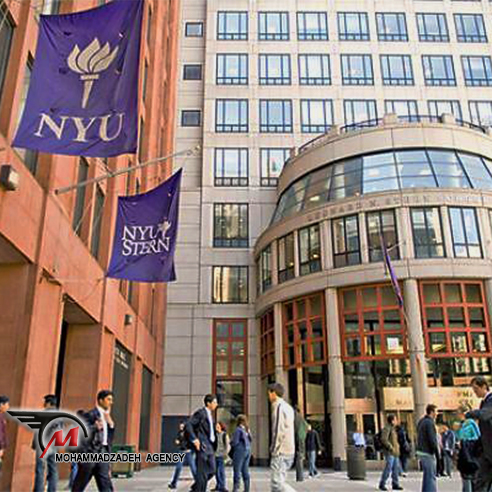

Columbia University
Founded in 1754 as King’s College by Royal Charter of King George II of England, Columbia is the oldest university in the state of New York and one of the oldest in the US. Its main landmark is the Low Memorial Library, which was built in the Roman Classical style and still houses the university’s central administration offices. As well as its main campus in the heart of New York City on Broadway, Columbia has two facilities outside Manhattan: Nevis Laboratories, a center for the study of high-energy experimental particle and nuclear physics in Irvington, New York, and the Lamont-Doherty Earth Observatory in Palisades, New York. More than 80 faculty members, adjunct staff and alumni of Columbia have won a Nobel Prize since 1901, when the awards were first granted. These include chemist Robert Lefkowitz, economist Joseph Stiglitz and US President Barack Obama, who was given the Peace Prize in 2009. Columbia has also educated Founding Father of the US Alexander Hamilton, US presidents Theodore and Franklin Roosevelt and actors Jake Gyllenhaal, Katie Holmes and Joseph Gordon-Levitt. The private research-based university has 20 schools – which include architecture, planning and preservation; business; Jewish theological seminary; and law – and 23 libraries that are scattered across the city. Sponsored research from its medical center produces more than $600 million annually. Columbia Technology Ventures, the institution’s technology transfer office, manages more than 400 new inventions each year and has been involved in launching over 150 start-up companies based on Columbia’s technologies. The university also has nine Columbia Global Centers, which aim to promote and facilitate collaboration between the university’s staff, students and alumni in order to address global challenges. These are in China, Jordan, Turkey, Kenya, India, France, Chile, Brazil and New York City.
City: New York
Tuition: $60,578
Programs: Art, Business, Management, Medicine, Dentistry, Engineering & Applied Sciences, International Affairs, Journalism, Law, Nursing, Teacher Training
Fordham University
Fordham University is a research university in New York City, founded by the Catholic Diocese of New York in 1841 as St. John’s College. There are three campuses within New York State, which are: Rose Hill in the Bronx, Lincoln Centre in Manhattan and Westchester in West Harrison. In addition, the university has a study abroad center in the United Kingdom, Spain and South Africa. Ten different colleges make up Fordham University – four of which are for undergraduates while six are for postgraduates. These include: Bachelor of Arts, Bachelor of Science, and Bachelor of Fine Arts degrees, as well as the various master’s and doctoral degrees. The university, however, is most renowned for its humanities programs. Among Fordham’s graduate degrees is the Fordham School of Law, which is in fact home to the first Fashion Law Institute in the country.
The libraries at Fordham University are huge, containing more than two million volumes, periodicals and electronic journals. Moreover, it is also a depository for United States Government documents. Fordham University is considered a research university and facilities are available on campus to facilitate this. Buildings include the Louis Calder Centre – a 114-acre biological field station – the William Spain Seismic Observatory, and a data collection unit for the US Geological Survey. Many faculty of Fordham have conducted research with other institutions across the country such as the Memorial Sloan-Kettering Cancer Centre. Through the university’s international programs, students have the ability to study abroad during their studies. More than 130 opportunities are on offer, which can range between six weeks and a full academic year. Partner institutions include Georgetown University, the University of Oxford, and the Council on International Educational Exchange (CIEE). Notable alumni include Denzel Hayes Washington, Jr., an American actor, filmmaker, director, and producer, Vince Lombardi, an American football player, coach, and executive in the National Football League (NFL), and Mary Higgins Clark, an American author of suspense novels.
City: New York
Tuition: $54,008
Programs: Business, Arts and Sciences, Education, Religious Education, Social Service, Law
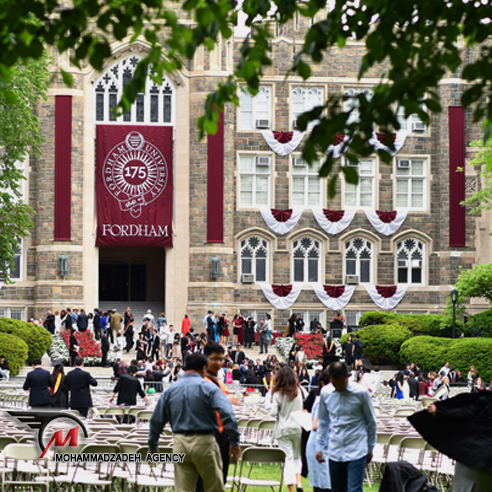

Pratt Institute
Pratt Institute has roots dating back to 1887 when it began offering programs in engineering, architecture and fine arts. It is based primarily in Brooklyn, New York however it has a satellite campus in Manhattan. Comprising of five schools, Pratt Institute is primarily known for its programs in architecture, interior design and industrial design. All degrees have a strong research focus. The main campus is located on a historic and enclosed 25-acre space, which is open to the public as park space during the daytime. There are many contemporary sculptures throughout the space, which makes the campus home to the largest sculpture park in New York City. Pratt Institute is divided into five schools with more than 28 departments and divisions offering a variety of courses, which include: visual studies, arts and cultural management, architecture and urban design, architecture, media arts, and social sciences.
Notable alumni include Robert Redford, an American actor, director, producer, businessman, environmentalist, and philanthropist, Kadir Nelson, an African-American artist, illustrator and author whose work has focused on African-American culture and history, and Harvey Forbes Fierstein, an American actor, playwright, and voice actor who has many Tony Awards to his name.
City: New York
Tuition: $53,824
Programs: Business & economics, Social sciences, Arts & humanities, Education
Stony Brook University
Stony Brook University (SBU) is one of New York State’s four universities, located in Long Island, just 60 miles east of New York City. It is a public research institution with a sea and space grant as well as being a member of the Association of American Universities, and a National Merit institution. It is also one of just 10 universities in the States to be recognized by the National Science Foundation for its combination of research and undergraduate study. With around 25,000 students, SBU has 13 schools and colleges in total, including the Graduate School and Honors College. Its School of Health Sciences is made up of five professional schools and enrolls around 3,000 students. The schools are of Dental Medicine, Nursing, Social Welfare, Medicine, and Health, Technology and Management. The main campus is a large site on Long Island’s North Shore, which spans over 1,000 acres and houses the main academic areas, an 8,300-seat stadium and sports complex, and a university hospital, Stony Brook Medicine. In addition to this, there are two satellite campuses – one in midtown Manhattan and the other in the town of Southampton. There are 28 residence halls and 23 apartment-style buildings on campus where approximately 83 per cent of undergraduates live. The main library belongs to the Association of Research Libraries and the Health Sciences Centre Library is a member of the Association of Academic Health Sciences Libraries. Books, print and electronic journals, microforms, music recording, and maps. Its athletic teams are known as the Stony Brook Seawolves and their mascot is Wolfie the Seawolf. While a seawolf is a mythical creature who brings good luck, Wolfie is also something of a local celebrity who makes regular TV appearances and attends charity events.
City: Long Island
Tuition: $27,845
Programs: Psychology, Education, Physical sciences, Arts & humanities, Life sciences, Clinical, pre-clinical & health, Engineering & technology, Social sciences, Computer science

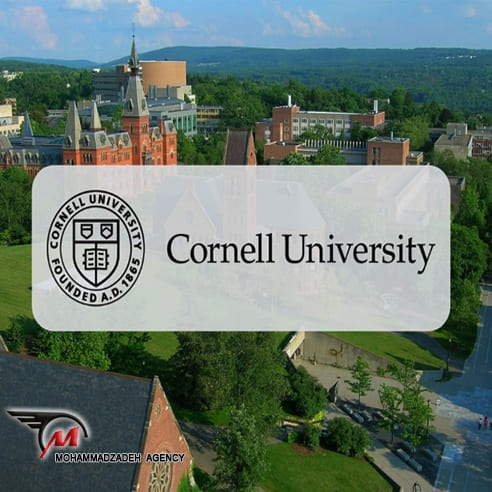
Cornell University
Founded in 1865, Cornell University is a private Ivy League university with a mission to “discover, preserve, and disseminate knowledge”. A federal land grant university with a private endowment, Cornell has six locations across the world. Its main campus in Ithaca, New York State, covers 2,300 acres of the Finger Lakes region, and is so extensive that students can go hiking without even leaving the university. It also has a graduate school of medical sciences in New York city, a base in Rome where students study art, architecture and urban planning, a center for students to gain work experience in Washington DC, and a medical college at Education City in Doha, Qatar. Cornell counts 45 Nobel laureates among its faculty members and alumni. Other notable alumni include Tsai Ing-wen, the president-elect of Taiwan, and Huey Lewis, frontman for the band Huey Lewis and the News.
City: Ithaca
Tuition: $57,222
Programs: Clinical, pre-clinical & health, Social sciences, Arts & humanities, Engineering & technology, Psychology, Business & economics, Computer science, Life sciences, Law, Physical sciences
Colgate University
Located in the state of New York, Colgate University is one of the oldest institutions in the North East. A private liberal arts college, it was founded in 1819. Originally the Baptist Education Society of the State of New York, it was Madison University from 1846 until 1890, when it adopted its current name to thank the Colgate family for their dedication to the institution. William Colgate, one of the institution’s first trustees, founded what went on to become Colgate, the toothpaste manufacturer. Located in the center of the state, in the village of Hamilton, Colgate University is 200 miles north west of New York City, where regular buses run to. 575 acres in size, its rural hillside campus has been rated among the nicest in the country, dotted with around 90 buildings, some built as early as the 1820s, and more than 2000 trees. The institution’s undergraduate courses culminate in a Bachelor of Arts. One of the university’s traditions involves first-years walking up the hill with seniors holding torches when they start their courses, and carrying torches themselves when they walk down at the end of fourth year before throwing them into a bonfire. Its student newspaper, the Colgate Maroon-News, is the oldest weekly at any US college, with its roots dating back to 1846. Notable alumni include Bruce Buck, the chairman of Chelsea Football Club, and Chase Carey, the chairman of Formula One.
City: Hamilton
Tuition: $58,045
Programs: Computer science, Arts & humanities, Law, Business & economics, Psychology, Life sciences, Education
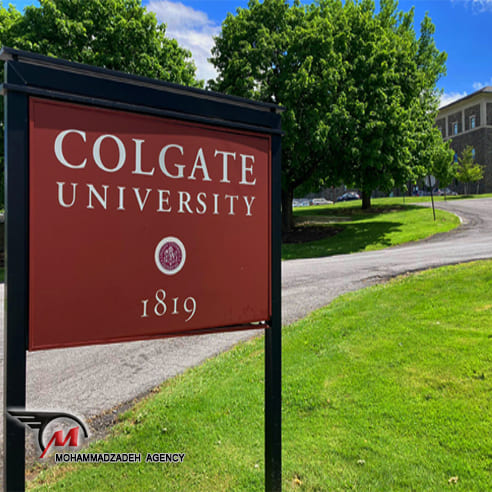
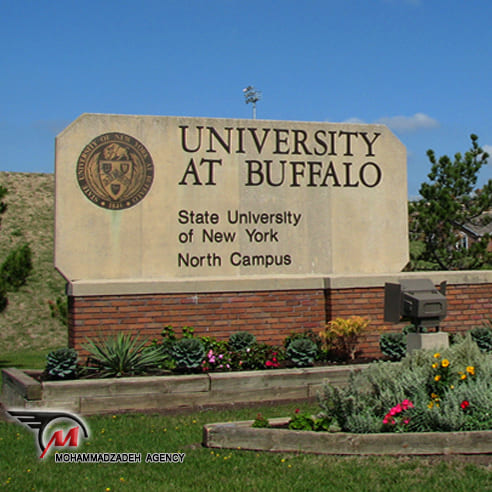
University at Buffalo, The State University of New York
Established in 1846, the University at Buffalo is a research-intensive institution located in upstate New York, close to the Canadian border. By enrolment numbers, it is the largest institution in the 64-campus State University of New York (SUNY) system, with around 20,000 undergraduates and 10,000 graduate and professional students. The undergraduate student to undergraduate faculty ratio is 13:1. The university is a multi-campus institution. The larger North Campus, located in the town of Amherst, is home to most of the university’s undergraduate programs. Its South Campus, in a residential district of Buffalo, dates back to the 1920s and comprises classic architecture and ivy-covered buildings. The Downtown Campus is the newest of the three, where most of the university’s medical research centers can be found. Buffalo offers more than 100 undergraduate degree programs in all, as well as over 200 master’s degrees, 84 doctoral degrees and 10 professional degrees.
It is organized around 13 separate schools and colleges: Architecture and Planning, Arts and Sciences, Dental Medicine, Engineering and Applied Sciences, Medicine and Biomedical Sciences, Nursing, Pharmacy and Pharmaceutical Sciences, Public Health and Health Professions, Social Work, the Roswell Park Cancer Institute Graduate Division, a Graduate School of Education, a Law School, and School of Management. Among Buffalo’s alumni are two NASA astronauts, one of America’s top geneticists, a Nobel Prize-winning chemist, a Tony Award-nominated stage and screen actor, a legendary jazz musician, and CEOs of several major companies. Buffalo’s faculty have been recognized by awards as the Nobel Prize, the Pulitzer Prize, the National Book Award, the National Medal of Science and the National Medal of Technology, among others. The university’s athletes are nicknamed ‘Bulls’ and their mascot, Victor E Bull, attends football matches dressed in the blue and white team colors.
City: Buffalo
Tuition: $28,194
Programs: Architecture and planning, arts and sciences, dental medicine, engineering and applied sciences, medicine and biological sciences, nursing, pharmacy, public health, social work. Law and Management
Rensselaer Polytechnic Institute
Rensselaer Polytechnic Institute (RPI) is America’s oldest technological research university, located in the city of Troy, New York. It also has two additional campuses, in Hartford, New York, and in Groton, Connecticut. It was founded by a former New York State Senator, Stephen Van Rensselaer, and the educator and geologist, Amos Eaton, in 1824. The university offers students over 145 programs at bachelor’s, masters and doctoral levels across schools of Engineering, Science, Architecture, Humanities, Arts and Social Sciences, and the Lally School of Management. It also offers an interdisciplinary degree in Information Technology and Web Science. With the motto ‘Why not change the world?’ RPI fosters a spirit of discovery and innovation. Among the university’s faculty members are National Science Foundation Presidential Faculty Fellows, and members of the National Academy of Engineering, and the National Academy of Sciences. RPI’s research activity focusses around five key areas: biotechnology and life sciences; computational science and engineering; nanotechnology and advanced materials; energy, the environment, and smart systems; and media, arts, science and technology. Notable RPI alumni include the engineer George Washington Gale Ferris, Jr., who in 1893 built the first Ferris Wheel for the Chicago World’s Columbian Exposition; David L Noble, inventor of the floppy disk; and Washington Roebling, chief engineer of the Brooklyn Bridge. One of the university’s founding aims was to apply science and technological discoveries to “…the common purposes of life.” It’s a philosophy still in evidence today with RPI laying claim to a great many graduates who have gone on to construct canals, roads, bridges and skyscrapers.
City: Troy
Tuition: $55,378
Programs: Engineering, Science, Architecture, Humanities, Arts and Social Sciences, and Management
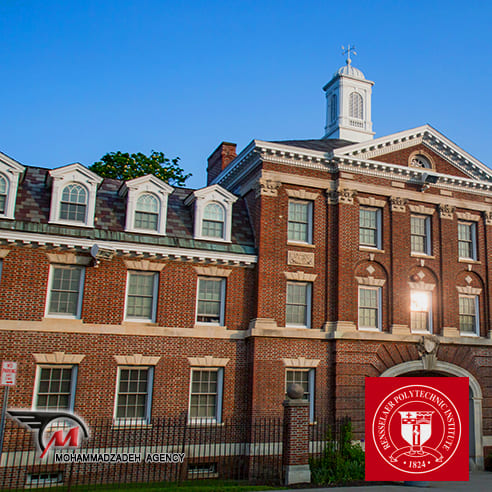
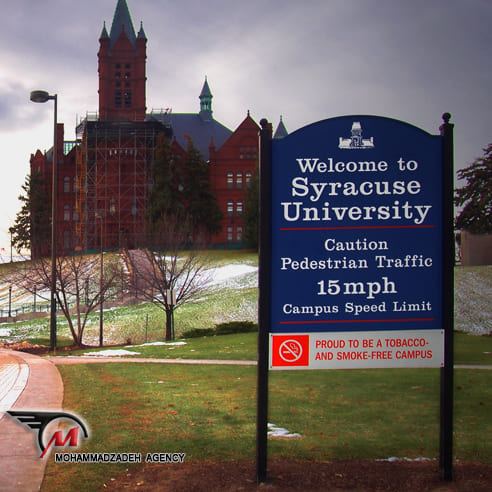
Syracuse University
Syracuse University is home to more than 20,000 enrolled students, from over 123 different countries. It has 12 academic units, including the Graduate School, the School of Information Studies, the Maxwell School of Citizenship and Public Affairs and the David B. Falk College of Sport and Human Dynamics. In 1874, just four years after its founding, the university offered the very first bachelor of fine arts (B.F.A.) degree in the United States. To this day the College of Visual and Performing Arts is highly reputed and produces eminent alumni, including visual artist Sol LeWitt who received his BFA from Syracuse University in 1949. Syracuse University also founded one of the first schools of journalism in the country in 1934, which would become the S.I. Newhouse School of Public Communications. Currently, minority students make up more than a quarter of all enrolled students. In fact, the university has a long history of promoting diversity and inclusion since its founding as a coeducational university. The fourth African American woman physician in the United States graduated from Syracuse in 1876, and American football player Ernie Davis, who graduated in 1962 was the first African American to win the Heisman Trophy for excellence in college football. Eileen Collins – the first woman to command a NASA space mission – earned a degree in mathematics and science in 1978, and five years later actress Vanessa Williams was the first African American crowned Miss America while pursuing her theatre major at the university.
City: Syracuse
Tuition: $52,255
Programs: Architecture, Engineering and Computer Science, Sport and Human Dynamic, Management, Law, Arts and Sciences, medical
University at Albany, The State University of New York
The State University of New York Albany, commonly known as UAlbany or SUNY Albany, is a university with a history dating back to the mid-19th century. Originally a school, in 1914, it became the New York State College for Teachers, providing training within the context of a liberal arts curriculum. During New York State’s higher education expansion in 1962, it became one of the state’s four university centers. UAlbany is located in the small city of the same name, the state’s capital, under 150 miles north of New York City, home to a wide range of architecture, including a variety of churches, temples, and mountain views. Albany, whose most student-friendly area is around Lark Street, is one of the state’s culture and entertainment hubs after New York City. English language and literature, business, management, and biological and biomedical sciences are among UAlbany’s most-commonly studied subjects. Its College of Emergency Preparedness, Homeland Security and Cyber security is the first of its kind. There are three campuses spread across 610 acres, over 40 annual study abroad destinations and more than 200 student clubs and organisations, including the Student Association, set up in 1923. It has around 20 Division I athletics teams. UAlbany is a major economic driver locally, and a research hub. Previous research investment has neared $89m. Meanwhile, the Research Foundation for the State University of New York is the biggest university-linked research foundation nationwide. Notable UAlbany alumni include civil rights leader Harvey Milk, one of the first openly gay Americans elected to public office.
City: Albany
Tuition: $27,766
Programs: Biological Sciences, Management, Business & economics, Arts & humanities, Social sciences
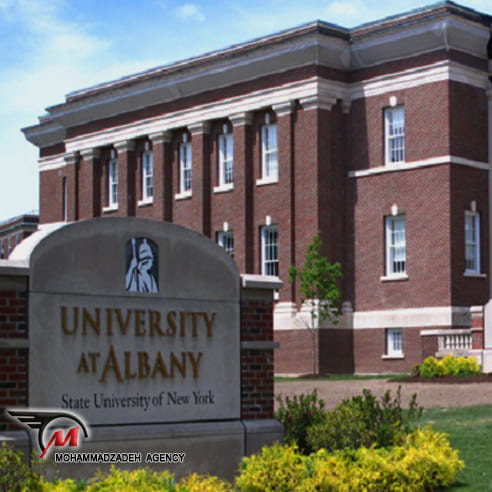
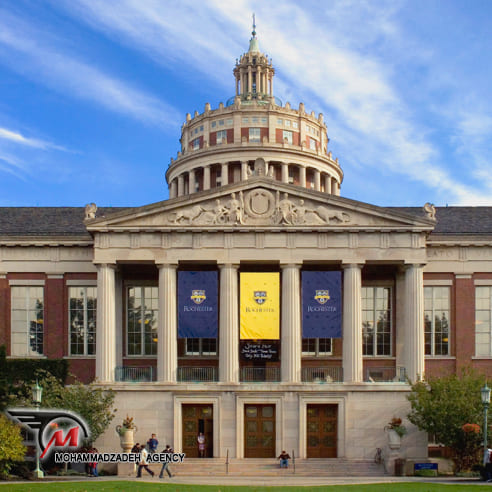
University of Rochester
Established in 1850, the University of Rochester is a private non-sectarian research university based in the city of Rochester, New York. It serves around 11,000 students of graduate and undergraduate level, split roughly half and half between men and women. The university comprises 158 buildings and around 2,000 faculty members. It prides itself on its intimate teaching style and claims a student-teacher ratio of 10:1. The university is spread across four campuses, the main one being River campus, situated just south of downtown Rochester by the Genesee River. Its centerpiece is the Eastman Quadrangle, which is home to the Faculty of Arts, Sciences and Engineering. The other campuses are the medical Centre, the Eastman school of music – home to the large Eastman Theatre concert hall, which also serves the Rochester philharmonic orchestra – and the South campus located in the town of Brighton. In 1929 the Institute of Optics was founded at Rochester, becoming the first educational programme devoted specifically to optics in America. As well as this, the Omega Laser Facility houses two of the highest energy and intensity lasers in the world. The university has a total budget of around $3 billion and an endowment of roughly $2.2 billion. It has an alumni network of more than 100,000 and eight Nobel Prize winners. Rochester’s official motto “Meliora” translates from the Latin as “ever better” or “always better.” Its official flower has been the humble dandelion since 1853 when the growing university, requiring more space, was given eight acres of cow pastures as a donation. According to legend, the well-fertilized pasture resulted in a profusion of dandelions that led to the flower’s adoption as the school emblem.
City: Rochester
Tuition: 56,030 $
Programs: Science and Art, Applied Sciences and Engineering, Medicine and Dentistry, Nursing, Music, Business, Education
Clarkson University
Clarkson University is a technology and research-oriented institution based in the town of Potsdam, NY. Founded in 1896, Clarkson’s main campus is located in Potsdam, New York, and additional graduate programs and research facilities are based near industry partners in Schenectady and Beacon, New York. At Clarkson there are more than ninety-five programs of study for students, in the sectors of Engineering, Business, Arts, Sciences, Education and Health. There is also groundbreaking research being undertaken at the five distinct scientific research centers at Clarkson, made possible through a $30 million grant to the university, the largest in its history. In 2016 Centre for Advanced Materials Processing presented its work at an international symposium in Lake Placid, NY. Clarkson is home to several top research centers, including the Center for Advanced Materials Processing (CAMP), the Institute for a Sustainable Environment (ISE), the Center for Air and Aquatic Resources Engineering and Science (CAARES), the Center for Identification Technology Research (CITeR), the NYS Center of Excellence in Health Water Solutions, the Shipley Center for Innovation and the Center for Rehabilitation Engineering, Science & Technology (CREST).
Faculty experts bring in grant funding for research from a variety of resources, such as the National Science Foundation (NSF). Research expertise spans across all disciplines, with an elevated focus on healthy world solutions, data and complex systems analytics, advanced materials development and next generation healthcare technologies. Clarkson has had at least one Goldwater Scholar every year for the last 22 years, and boasts a competitive Honors Program for students who want to pursue research throughout their Clarkson undergraduate experience.
City: Potsdam
Tuition: $51,128
Programs: Engineering, business, art, science, education and health, technology
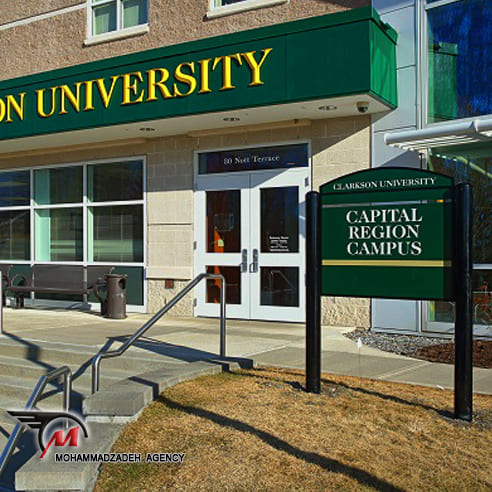

Leave A Comment